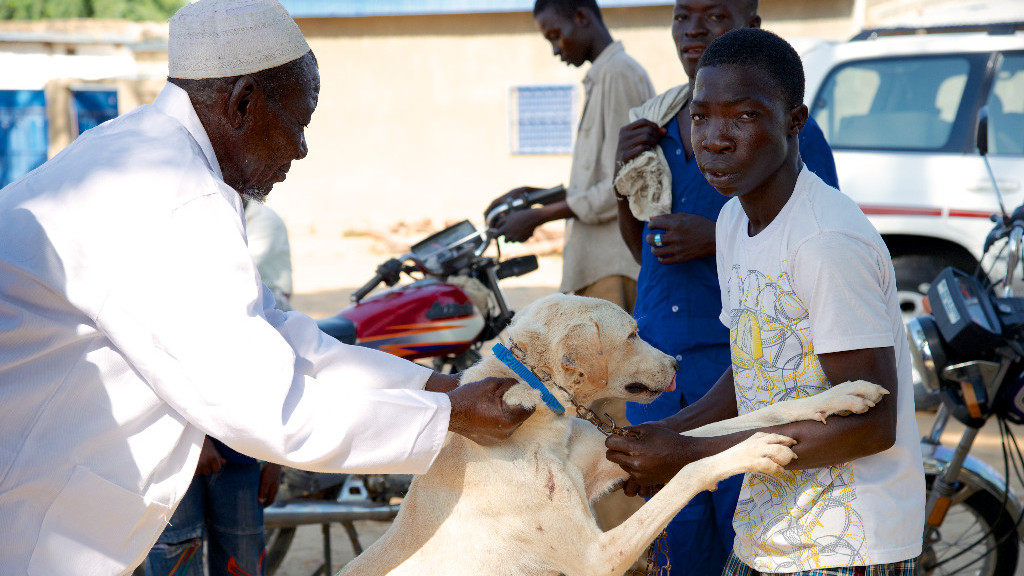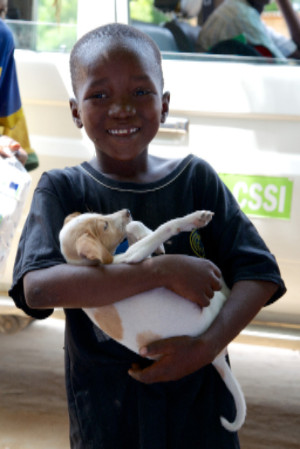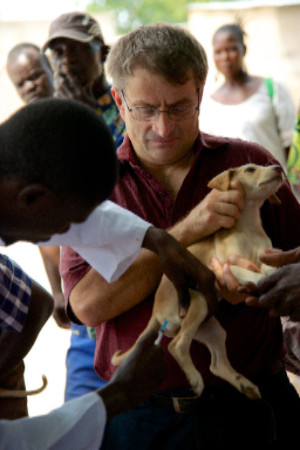Elimination of Rabies in N’Djamena - Chad

The Disease
Rabies is a viral zoonosis causing tens of thousands of deaths annually, with 40% being children under 15. The highly neurotropic virus is found in saliva of infected humans or animals. Rabies is transmitted to humans primarily (99%) through dogs; this type is called “urban rabies” as opposed to sylvatic rabies which has a wildlife reservoir. However this term is misleading because dog rabies is also a huge problem in rural areas. After an infection, the disease is fatal as soon as typical symptoms appear (aggressiveness, agitation, hydrophobia). The only possibility to prevent human deaths is a post-exposure prophylaxis shortly after infection. In many developed countries, mass vaccination of susceptible animals and public education lead to the elimination of the disease. But in many developing countries, for instance Chad, poverty, the lack of transport and knowledge prevents a successful control of rabies.

Situation in N´Djamena
In N´Djamena, capital city of Chad, Swiss TPH (Tropical and Public Health Institute) interacted towards solving this problem. Although the disease is very present, it is neglected and does not appear in official statistics. Due to this ignorance, most inhabitants are unaware of the right measures to take in case of an exposure, or even the existence of human vaccination possibilities. Simultaneously, over 23’000 dogs roam around human habitations in search of garbage: Dog owners with the capacities to feed and care for their animals are rare.
Strategy to Control Rabies
Swiss TPH was asked for collaboration when the Chadian authorities decided to work on the problem. The Chadian partners were IRED (Institut de Recherche en Elevage pour le Développement) and CSSI (Centre de Support en Santé Internationale). Under the principle of “one health”, they would try to develop the most cost-effective and feasible strategy to control rabies in N´Djamena.
During pilot vaccination campaigns in 2012 and 2013 conducted in 3 quarters of N’Djamena, data were collected to construct a mathematical model to evaluate the cost effectiveness of a mass vaccination over the whole city area. This model showed that the dog vaccination costs would be surmounted by the constantly growing costs of post-exposure prophylaxis after six years. After the Chadian authorities were convinced by the economization, the vaccination of 1800 dogs was achieved in 2012, thanks to the mobilized financial resources from IRED and major support of UBS Optimus foundation. During the second mass vaccination in 2013, 22’000 dogs were immunized.
Interruption through Vaccination
The transmission of rabies in a population can be interrupted through vaccination coverage of 70%. In both vaccination campaigns this threshold could be overstepped. In theory, N´Djamena should be rabies free since the number of susceptible animals dropped to under one animal per month in November 2013 and the number of rabid dogs declines towards zero. Only one exception was detected in January 2014 close to the border of a village which was not integrated in the vaccination program. It is very probable that this dog was a case of disease reintroduction.
New Project
The successful accomplishment of the rabies-control program in N´Djamena is at once the beginning of a new project: Swiss TPH and Chadian veterinarians/ human health professionals will collaborate to introduce a national rabies reporting system to expand the rabies control across all of Chad. Probably this transdisciplinary cooperation on a “one health” foundation will lead to deeper and enriched knowledge in the science of disease elimination.
